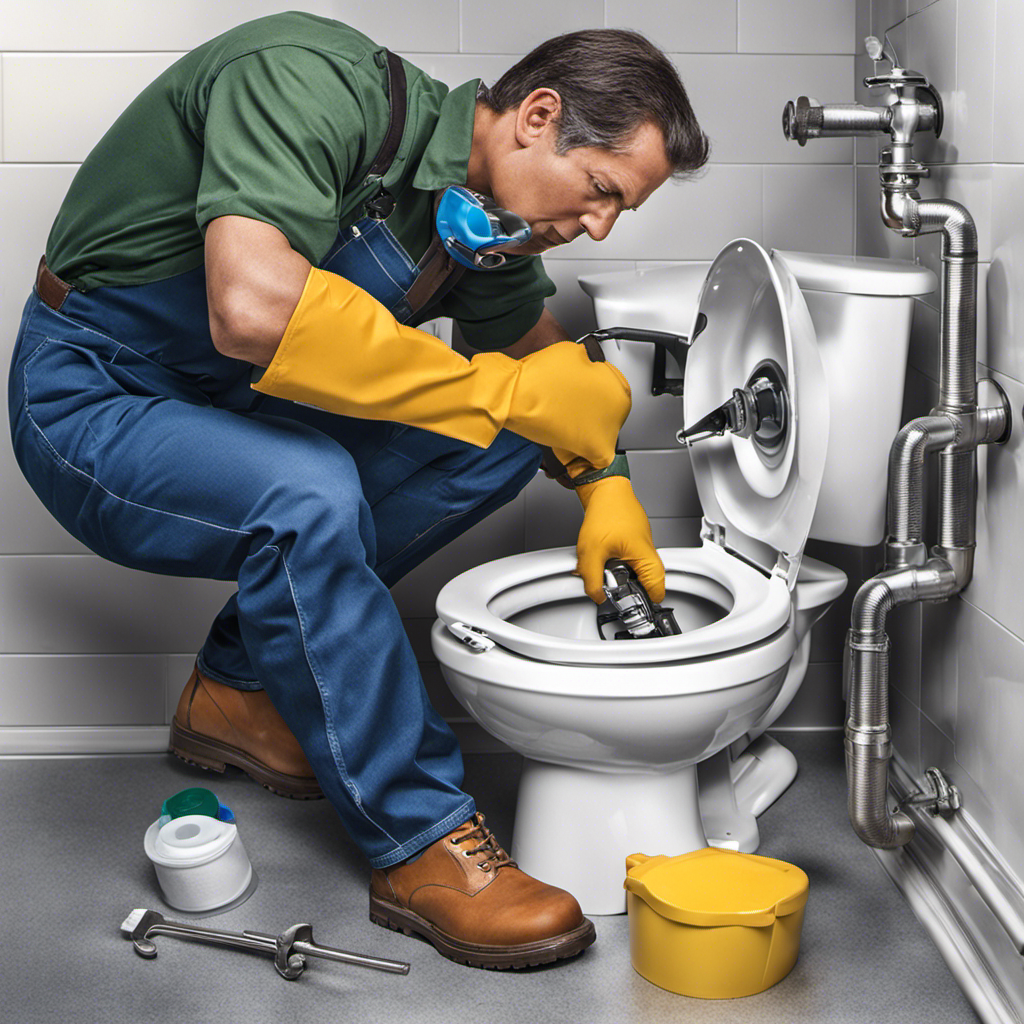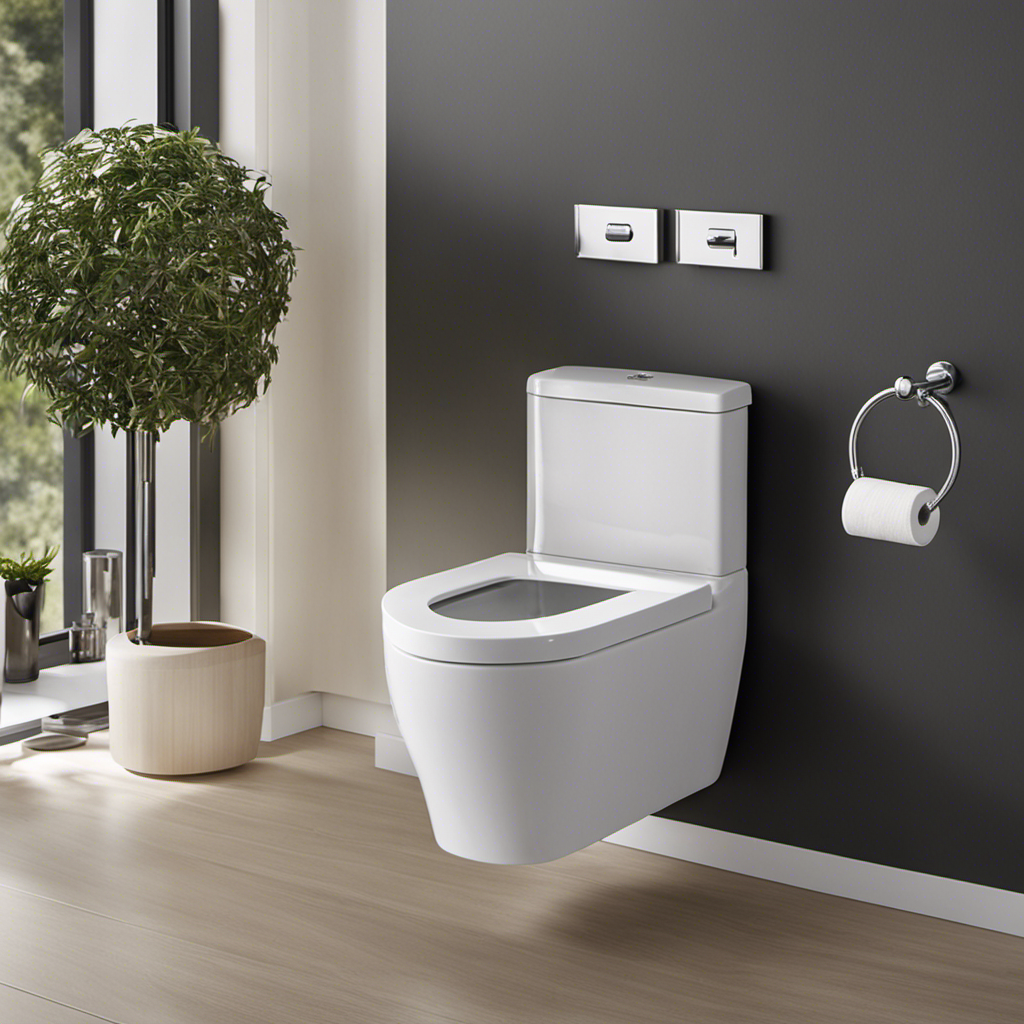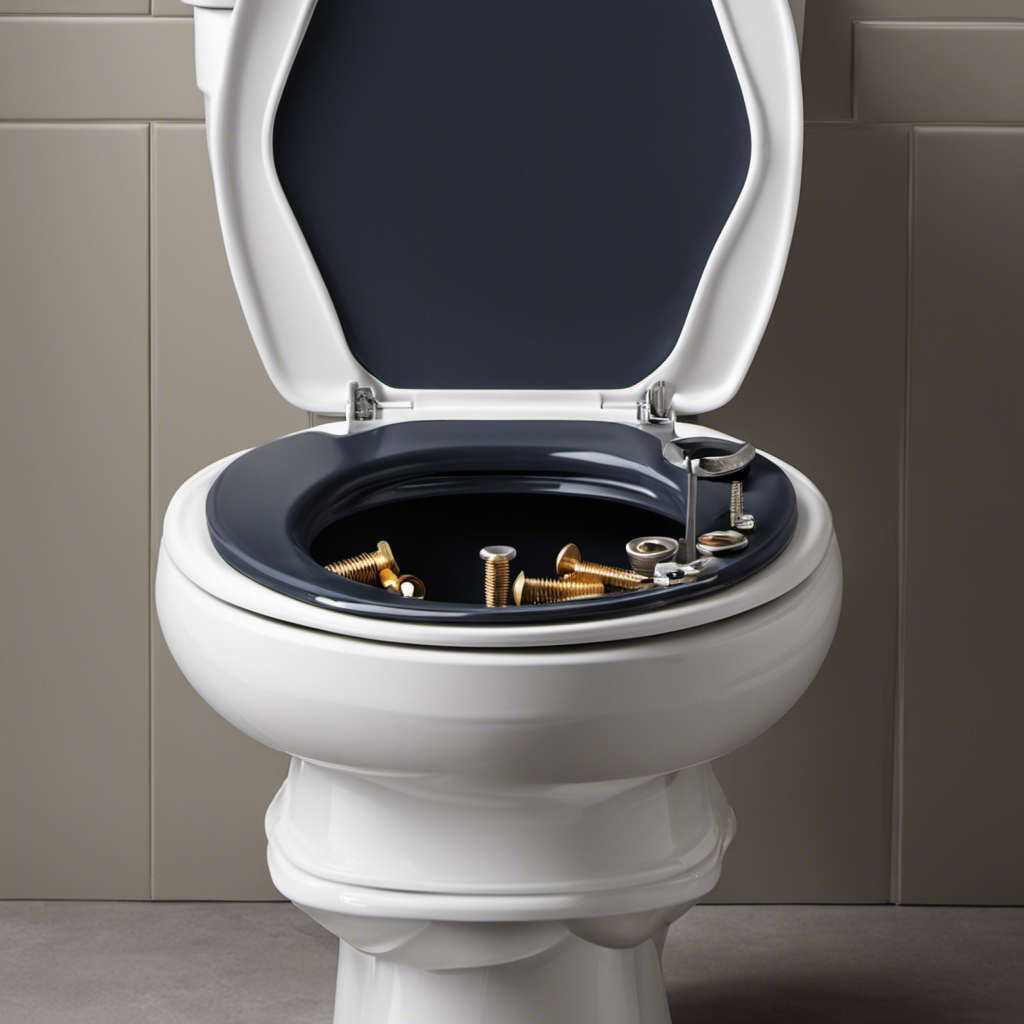As a homeowner, I’ve encountered my fair share of plumbing issues, but one problem that always seems to leave me feeling frustrated is a faulty toilet flush.
Thankfully, I’ve learned a few tricks along the way that have saved me from calling a plumber. In this article, I’ll share my knowledge on how to fix the toilet flush, covering everything from troubleshooting weak flushes to replacing the flush valve.
With these practical tips, you’ll be able to tackle this common household problem with ease.
Key Takeaways
- Regular maintenance is crucial for keeping the toilet flush mechanism in good working condition.
- Common toilet flush problems include constant running water, high water level in the tank, and weak flush.
- Troubleshoot a running toilet by replacing the flapper valve, adjusting the chain length, or replacing the float valve if necessary.
- To fix a running toilet flush, turn off the water supply, clean or replace the flapper valve, and ensure a proper seal.
Understanding the Toilet Flush Mechanism
To understand how to fix the toilet flush, it’s important to know how the mechanism works.
The toilet flush mechanism consists of several key parts that work together to ensure proper flushing. The main components include the flush valve, the fill valve, and the lever or button.
The flush valve is responsible for releasing water from the tank into the bowl to create the flushing action. The fill valve then refills the tank with water after the flush.
Regular toilet flush maintenance is crucial to keep these parts in good working condition. It is recommended to periodically check for any leaks, clean the flush valve, and adjust the fill valve if necessary.
Identifying Common Toilet Flush Problems
One common issue with toilets is when they won’t stop running. It can be quite frustrating to hear that constant sound of water running, not to mention the wasted water and potential increase in your water bill. To help you troubleshoot this problem, I have created a table below outlining some possible causes and solutions for a running toilet:
| Problem | Possible Cause | Solution |
|---|---|---|
| Constant running water | Faulty flapper valve | Replace flapper valve |
| Loose chain connecting flapper to handle | Adjust chain length | |
| Faulty fill valve | Replace fill valve | |
| High water level in the tank | Adjust water level | |
| Faulty float valve | Replace float valve |
Troubleshooting a Weak Toilet Flush
Addressing a weak flush in your toilet can be done by checking for any clogs or blockages in the pipes. If there are no visible obstructions, you may need to increase the water pressure to improve the flush.
To do this, locate the water supply valve behind the toilet and turn it clockwise to increase the water flow.
Another common cause of a weak flush is a loose or improperly adjusted flapper chain. The flapper chain controls the release of water from the tank into the bowl. To adjust it, simply lift the lid of the toilet tank and find the chain connected to the flapper. Tighten or loosen the chain as needed to ensure proper function.
Fixing a Running Toilet Flush
If your toilet keeps running, you may need to check the flapper valve for any damage or debris. Troubleshooting a noisy toilet flush and preventing toilet flush leaks can be done by following a few simple steps.
First, turn off the water supply to the toilet by locating the shut-off valve and turning it clockwise.
Next, remove the tank lid and locate the flapper valve. Inspect the flapper for any signs of damage or wear, such as cracks or tears. Clean the flapper and the valve seat, removing any debris that may be causing a poor seal.
If the flapper is damaged, it may need to be replaced. Reinstall the flapper and turn the water supply back on. This should fix the running toilet.
In the next section, we will discuss replacing or repairing the toilet flush valve.
Replacing or Repairing the Toilet Flush Valve
To replace or repair the toilet flush valve, start by turning off the water supply and draining the tank completely. This is an essential step to ensure your safety and prevent any water damage. Once the tank is empty, you can proceed with the following steps:
- Remove the tank lid and locate the flush valve assembly.
- Inspect the flush valve for any cracks or damage.
- If the flush valve is damaged, it will need to be replaced.
- To replace the flush valve, disconnect the water supply line from the bottom of the tank and unscrew the flush valve from the tank.
- Install the new flush valve by screwing it into place and reconnecting the water supply line.
- Once everything is securely in place, turn on the water supply and check for any leaks.
- Finally, adjust the water level in the tank to the recommended level for proper flushing and toilet performance.
Conclusion
In conclusion, fixing a toilet flush can be a simple task with the right knowledge and tools. By understanding the mechanism and identifying common problems, troubleshooting and fixing a weak or running toilet flush becomes manageable.
Whether it’s adjusting the water level or replacing the flush valve, these practical solutions can save you time and money. So why tolerate a faulty toilet flush when you can easily fix it yourself?
Remember, a properly functioning toilet flush is essential for a comfortable and convenient bathroom experience.










